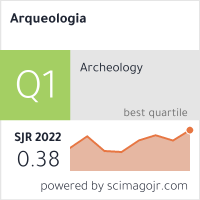Spatial mobility, interaction and social formations in the South Andes. The case of Isluga and the Altiplano-Precordillera system
Keywords:
Isluga, Mobility and exchange, Altiplano-Precordillera system, Ethnoarchaeology, Ethnohistory
Abstract
In this paper we state that the practices of spatial mobility of the pastoralists community from Isluga (Chilean Altiplano, precordillera of Tarapaca region) could represent a transformed continuity regarding to pre-Hispanic mobility patterns and exchange. Ethnographic background information regarding grazing practices nowadays, as well as indications for these dynamics during the second half of the last century, are presented. Ethnohistorical records, supported by early and late colonial documents suggest the existence of dynamic interactions between high Andean ethnic groups and local ethnic groups in the ravines, valleys and coasts. This article highlights the need to continue ethnoarchaeological research along with ethnohistorical data; this would more faithfully sustain that the dynamics of mobility and exchange developed by Isluga pastors today certainly represents a continuity of constituting practices of the Andean social and spatial organization.Downloads
Download data is not yet available.
How to Cite
González Jiménez, B. (1). Spatial mobility, interaction and social formations in the South Andes. The case of Isluga and the Altiplano-Precordillera system. Arqueología, 21(3), 17-31. https://doi.org/10.34096/arqueologia.t21.n0.2375
Section
Articles
Authors who publish in this journal agree to the following conditions:
- Authors retain copyright and yield to the journal right of first publication with the work registered with attribution license Creative Commons, which allows third parties to use the published always mentioning the authorship of the work and first publication in this magazine.
- Authors can make other independent and additional contractual arrangements for the non-exclusive distribution of the version of the article published in this issue (p. Eg., Inclusion in an institutional repository or publish it in a book), provided that clearly indicate that the work was published for the first time in this magazine.
- It allows and encourages the author / s to publish their work online (eg institutional or personal pages) before and during the process of revision and publication, as it can lead to productive exchanges and greater and more rapid dissemination of work published (See The Effect of Open Access).





(1)13.png)






1.jpg)
1.jpg)


13.png)
1.png)


(1)1.png)









